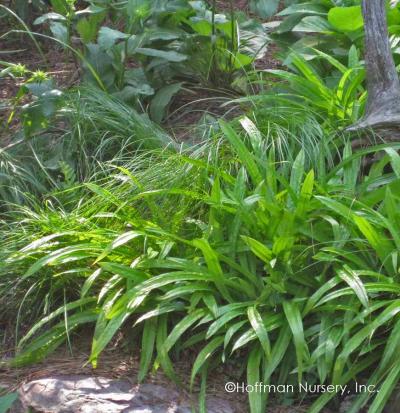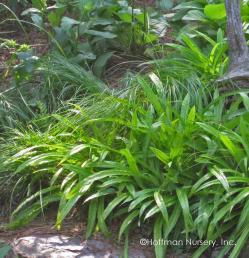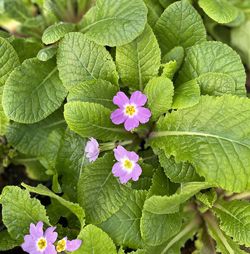Seersucker Sedge

Carex
Sedge
A diverse genus comprised of nearly 1000 species, most Carex originate in the moist habitats of temperate climates. Easily grown, our winning selections produce a variety of different colored leaves that promise to soften those sharp edges in your garden.

Deemed one of the most striking native woodland sedges, Carex plantaginea ranges from Maine to South Carolina and west to Minnesota and Alabama. Crafting a snug, lustrous deer-proof clump that’s most effective when massed, the dimpled, 1 in. wide lime-green blades are anchored by maroon-hued leaf sheathes beneath a bird-friendly display of cylindrical purplish brown inflorescences. Small-statured Seersucker Sedge promises bold mostly evergreen texture along woodland pathways or in mixed borders and rock gardens, where it withstands occasional drought, yet appreciates rich, adequately-moist niches plus a late winter cut back.
Blooms April–May
Size: 8" – 12" high x 12" – 18" wide.
Hardy to zone 4.
Please fill out our Registration Form to receive news of updates to the web site, availability of new plants, give us your feedback, and to be on the mailing list to receive future printed catalogs.
Other selections in this genus:
- Carex albula ‘Frosted Curls’
- Carex cherokeensis
- Carex conica ‘Snowline’
- Carex divulsa
- Carex dolichostachya ‘Kaga Nishiki’
- Carex elata ‘Aurea’
- Carex elata ‘Knightshayes’
- Carex ‘Feather Falls™’
- Carex flacca (glauca)
- Carex flacca ‘Burton’s Blue’
- Carex flaccosperma
- Carex flagellifera (Bronze)
- Carex morrowii ‘Ice Dance’
- Carex morrowii var. temnolepis ‘Silk Tassel’
- Carex muskingumensis ‘Little Midge’
- Carex muskingumensis ‘Oehme’
- Carex oshimensis ‘Evergold’
- Carex oshimensis ‘Gold Strike’
- Carex pensylvanica
- Carex pensylvanica ‘Straw Hat’
- Carex scaposa
- Carex ‘Silver Sceptre’
- Carex tenuiculmis
- Carex testacea
- Carex testacea ‘Prairie Fire’
- Carex texensis











